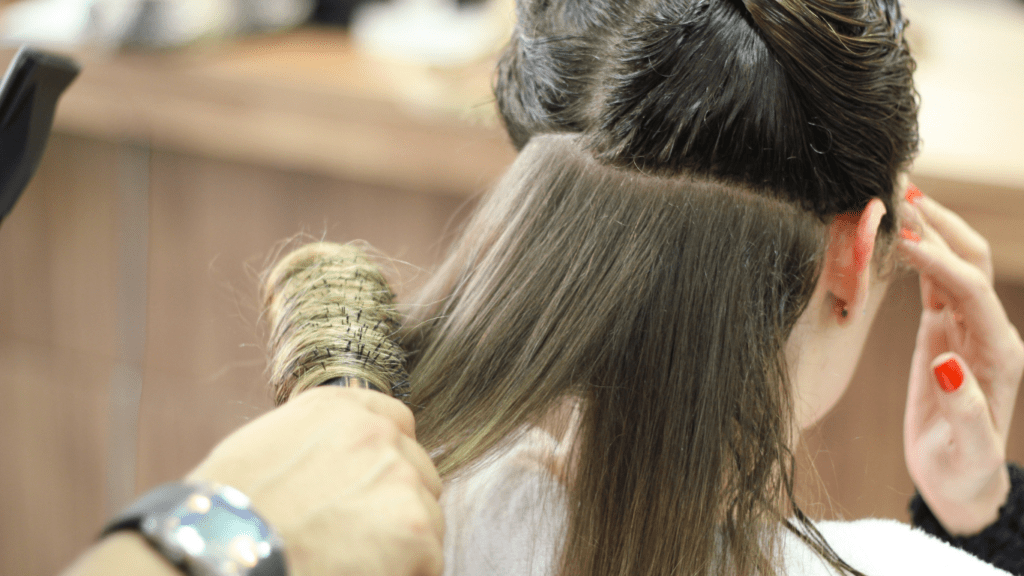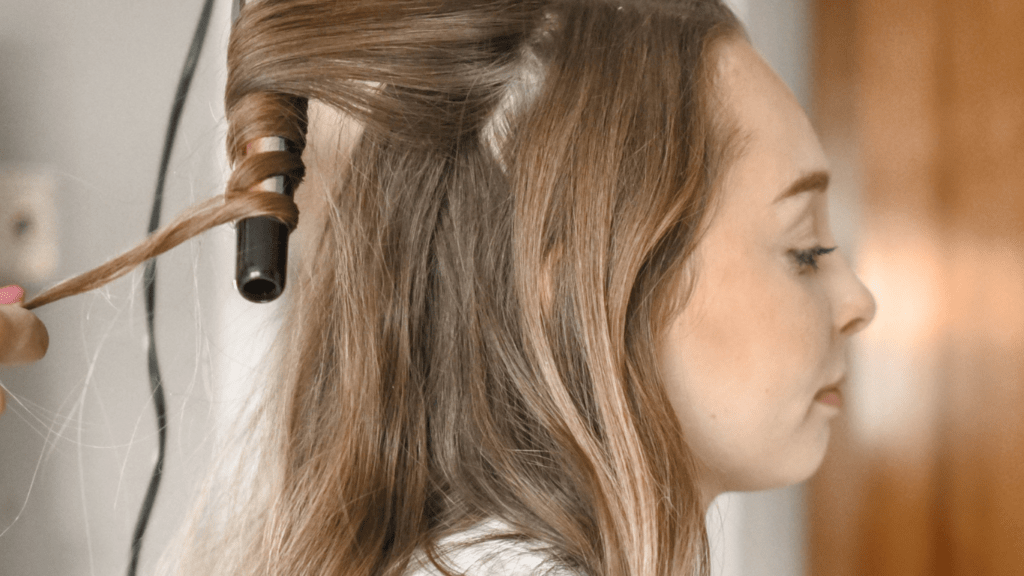Understanding Hair Damage
Hair damage often results from excessive heat exposure. When hair’s exposed to high temperatures, the cuticle – the outer layer – can crack, leading to frizz and breakage. Over time, these cracks deepen, causing split ends, and sometimes permanent damage.
Types of Hair Damage
- Thermal Damage: This involves heat weakening hair strands. Common tools, like straighteners and blow dryers, can cause this. Using these tools every day increases this risk.
- Mechanical Damage: This damage arises from physical actions, like brushing or combing when hair’s wet. Wet hair’s more elastic and prone to breakage.
- Chemical Damage: Dyeing, bleaching, and perms can weaken hair’s internal structure. This damage’s cumulative, with repeated treatments causing more harm.
- Environmental Damage: Sun exposure, wind, and pollution contribute to hair wear. UV rays can degrade hair proteins, making hair brittle.
Signs of Damaged Hair
Identify hair damage by its appearance and texture. Damaged hair often looks dull and feels coarse. Split ends and excessive tangling are common. Hair might also have an uneven color or appear frizzy even after styling.
Preventive Measures
Preventing damage involves limiting exposure to heat and chemicals. Use heat protectant sprays before styling and avoid high-temperature settings. Regular trims help manage split ends. Minimize chemical treatments and opt for less damaging options. Protect hair from sun with hats or UV-protection sprays.
Understanding these aspects of hair damage helps manage and prevent it, ensuring healthier, shinier hair.
Common Styling Tools That Cause Damage

Understanding which styling tools contribute to hair damage is crucial to maintaining healthy locks. I’ll delve into the most common offenders and explain how they impact your hair.
Hair Dryers
Hair dryers often expose hair to excessive heat, leading to dryness and brittleness. Daily use of this tool can strip natural oils from your strands, causing frizz and breakage. Use lower heat settings and heat protectant sprays to minimize the damage from regular blow-drying.
Flat Irons
Flat irons are a major culprit in causing hair damage. These tools use direct heat to straighten hair, which can weaken the hair structure if used frequently. High heat settings make hair more prone to split ends and breakage. Opt for ceramic or tourmaline plates and lower temperature settings to reduce thermal damage.
Curling Irons
Curling irons pose similar risks to flat irons, often leading to burnt or split ends. Constant use of curling irons can result in uneven texture and weakened hair bonds. Use a protective serum before curling and select a moderate heat level to maintain healthier hair.
Tips for Preventing Hair Damage
Using the right techniques and products helps prevent hair damage from styling tools. Here are practical steps you can follow.
Use Heat Protectant Products
Heat protectant products reduce the damage caused by styling tools. I always apply a heat protectant spray or serum before using any hot tool on my hair. These products create a barrier between my hair and the heat, locking in moisture. Look for protectants with ingredients like silicones or oils that withstand high temperatures.
Adjust Temperature Settings
Proper temperature settings play a crucial role in maintaining hair health. I set my styling tools to the lowest effective temperature, usually around 300°F (148°C) for fine hair and up to 400°F (204°C) for thicker hair. Many tools allow precise temperature control, letting me customize the heat based on my hair type and needs.
Limit Frequency of Use
Limiting the use of heat-styling tools preserves hair integrity. I aim to expose my hair to heat no more than two to three times a week. On non-heat days, I embrace natural hairstyles or use alternative methods like braiding or air-drying. This practice significantly reduces cumulative heat damage over time.
Hair Care Practices to Reduce Damage
Applying specific hair care practices can significantly reduce damage from styling tools. Below are some essential tips for maintaining healthy hair.
Regular Trims
Trimming hair every 6-8 weeks removes split ends and prevents further damage. Freshly cut ends look healthier and make it easier to style hair without causing additional stress. When damage affects the length of hair, these regular trims help maintain overall hair health.
Deep Conditioning Treatments
Using deep conditioning treatments weekly replenishes moisture lost to styling tools. Conditioners with ingredients like:
- keratin,
- argan oil
- shea butter
improve hair strength and elasticity. Deep conditioners penetrate the hair shaft, providing sustained hydration and reducing breakage.
Choosing the Right Hair Products
Selecting hair products suitable for your hair type is crucial. Use sulfate-free shampoos and hydrating conditioners to avoid stripping hair of natural oils. Opt for products with heat protection for added defense against styling tools. Look for labels indicating terms like “strengthening” or “damage repair” to ensure you’re using the best options for reducing damage.
Alternative Styling Methods
Exploring alternative styling methods can reduce hair damage from traditional tools. One effective method is air drying. After washing, I gently pat my hair with a microfiber towel and let it dry naturally. This eliminates heat exposure and keeps moisture intact.
Using braids is another method I prefer. Braiding damp hair creates natural waves without the need for heat. It’s crucial to use hair ties that don’t snag or pull hair to avoid breakage.
Velcro rollers are a great option for creating volume and curls without heat. I section my hair, wrap it around the rollers, and allow it to set. The result is voluminous curls without any thermal damage.
I also recommend trying the twist-and-pin technique. By twisting sections of hair and securing them with pins, you can achieve curls and waves once the hair dries. This method minimizes stress on the hair cuticle.
For straight hair, I use the wrapping method. After washing, I wrap my damp hair around my head and secure it with clips. This method provides sleek, straight hair without exposing it to heat.
Twist-outs and braid-outs offer texture and curl definition for natural hair. I twist or braid sections of my hair while damp, let it dry, and then unravel for a defined look.
Remember to allow hair to set thoroughly to ensure lasting styles. These alternative methods preserve hair integrity, minimizing the damage often caused by traditional heat-based tools.



 Founder & Hair Care Specialist
Edwardenn is the visionary force behind the website, with a deep passion for promoting healthy, beautiful hair. With years of experience in hair care and wellness, Edwardenn founded this platform to offer the latest hair care news, health tips, and expert advice. His mission is to empower individuals to understand and care for their hair, no matter their hair type or goals.
Founder & Hair Care Specialist
Edwardenn is the visionary force behind the website, with a deep passion for promoting healthy, beautiful hair. With years of experience in hair care and wellness, Edwardenn founded this platform to offer the latest hair care news, health tips, and expert advice. His mission is to empower individuals to understand and care for their hair, no matter their hair type or goals.

